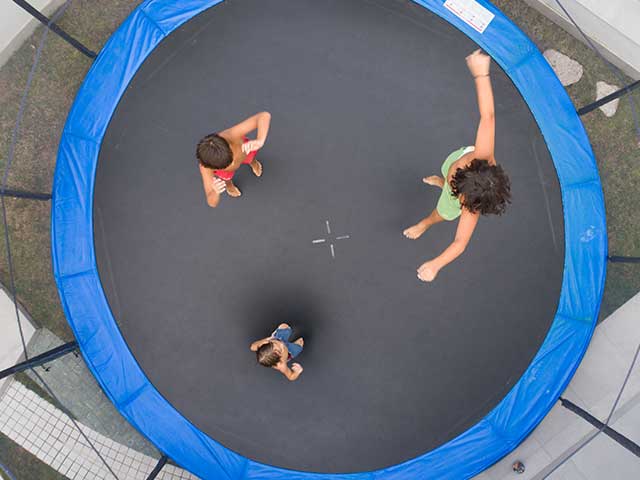Statistiques clés
Vous cherchez de l’information fiable sur l’activité physique?
Nous avons préparé une liste de statistiques clés sur l’état actuel de l’activité physique au Canada et son importance.
L’activité physique au Canada


L’impact de l’activité physique
L’impact comprend :
Santé
Coût de l’inactivité : 3,9 milliards de dollars par année
- Les coûts directs et indirects en soins de santé associés à l’inactivité physique au Canada ont été estimés à 3,9 milliards de dollars par année.
Économies possibles : 629 millions de dollars par année.
- Si seulement 10 % des personnes du pays bougeaient davantage, nous pourrions réaliser des économies annuelles de 629 millions de dollars en soins de santé, de l’argent qui sert actuellement à traiter des maladies chroniques comme les maladies cardiaques et le diabète de type 2.


Santé
Coût de l’inactivité : 3,9 milliards de dollars par année
- Les coûts directs et indirects en soins de santé associés à l’inactivité physique au Canada ont été estimés à 3,9 milliards de dollars par année.
Économies possibles : 629 $ million par année.
- Si seulement 10 % des personnes du pays bougeaient davantage, nous pourrions réaliser des économies annuelles de 629 millions de dollars en soins de santé, de l’argent qui sert actuellement à traiter des maladies chroniques comme les maladies cardiaques et le diabète de type 2.
Valeur du sport, de l’activité physique et des loisirs
- 37,2 milliards de dollars représentent la valeur économique annuelle du sport, de l’activité physique et des loisirs au Canada.
Investissements du gouvernement
- En 2022, les gouvernements du Canada ont investi 2 milliards de dollars dans les infrastructures liées à l’activité physique, au sport et aux loisirs.
Emplois
- En 2022, 260 000 emplois ont été créés dans le secteur de l’activité physique, du sport et des loisirs.


Valeur du sport, de l’activité physique et des loisirs
- 37,2 milliards de dollars représentent la valeur économique du sport, de l’activité physique et des loisirs au Canada.
Investissements du gouvernement
- En 2022, les gouvernements du Canada ont investi 2 milliards de dollars dans les infrastructures liées à l’activité physique, au sport et aux loisirs.
Emplois
- En 2022, 260 000 emplois ont été créés dans le secteur de l’activité physique, du sport et des loisirs.

Accessibilité
- 78 % des gens vivant au Canada disposent d’un réseau de transport en commun dans leur région.
Transport actif et réduction des coûts
- Si seulement 1 % des gens vivant au pays utilisaient le transport actif plutôt que leur voiture, ce sont 564 millions de dollars qui pourraient être économisés annuellement grâce à la réduction des émissions de gaz à effet de serre.
- Le transport en commun nécessite habituellement de faire un peu d’activité physique pour se rendre aux arrêts ou aux stations. L’utilisation du transport en commun pourrait permettre aux ménages d’économiser environ 10 000 $ par année, et contribuer de façon générale à diminuer les coûts liés aux soins de santé, car ce choix augmenterait aussi le niveau d’activité physique.
L’activité physique à l’échelle mondiale
explorez les bienfaits de l’éducation physique
Références générales
Cliquez pour voir
- Statistique Canada. Activité physique et temps passé en position assise mesurés directement au Canada : nouveaux résultats de l’Enquête canadienne sur les mesures de la santé, 2022 à 2024. The Daily; 17 oct. 2025. Trouvé au : https://www150.statcan.gc.ca/n1/daily-quotidien/251017/dq251017b-fra.htm
- Institut canadien de la recherche sur la condition physique et le mode de vie (ICRCP) et l’Association canadienne des parcs et loisirs (ACPL). 2023. Le prix de l’inactivité : Mesurer l’incidence considérable du sport, de l’activité physique et des loisirs au Canada. ICRCP & ACPL. Ottawa, ON, Canada. Trouvé au https://measuring-impact.ca/wp-content/uploads/2023/11/CFLRI-CPRA_Price-Inactivity-Full-Report-FR-FINAL.pdf
- Tovar-García E.D. Participation in Sports, Physical Exercise, and Wage Income: Evidence from Russian Longitudinal Data. (2021). German Journal of Exercise & Sport Research, 51:333–343.
- Organisation mondiale de la santé. Plan d’action Mondial pour promouvoir l’activité physique 2018–2030 : Des personnes plus actives pour un monde plus sain. Genève : Organisation mondiale de la santé; 2018. License: CC BY-NC-SA 3.0 IGO. Trouvé au https://apps.who.int/iris/bitstream/handle/10665/272722/9789241514187-eng.pdf?sequence=1&isAllowed=y
- ± Les années de vie ajustée en fonction de l’incapacité en raison d’une maladie ou d’un problème de santé représentent la somme des années de vie perdues en raison d’une mortalité prématurée et des années vécues avec une incapacité en raison de la maladie ou d’un problème de santé au sein d’une population.




aspects Sociaux
Résilience et développement des habiletés sociales